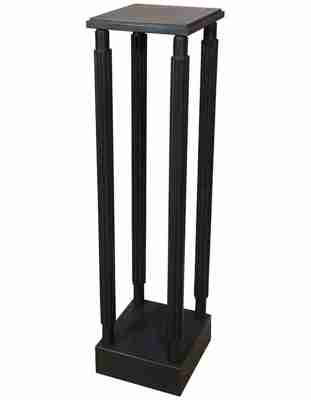Architectural Stands Designed by Sir John Soane Are Reproduced by Jonathan Burden Gallery
What’s hundreds of years old and looks like it was made only yesterday? The answer to that is almost anything designed by Sir John Soane (1753–1837), the edgy, influential British architect who stripped classicism to its barest, most powerful essence. And that includes the stands made to display his collection of architectural models and which Manhattan’s Jonathan Burden gallery is now reproducing.
A year ago Burden was flipping through Helen Dorey’s A Catalogue of the Furniture in Sir John Soane’s Museum and found himself stunned by a Soane work he had never seen before: a mahogany console accented by slender reeded columns so ingeniously carved that its top shelf seemed to be floating. “The museum had asked if I would pick a piece that could be manufactured to raise some revenue, and that was the one I wanted to make,” Burden recalls. “It jibes well with modernist furnishings but also would look great placed alongside something by Chippendale.”

The original console, along with two pedestal versions, was among the furnishings of Soane’s Model Room, an 1830s space that was dismantled soon after his death; the central model stand was cut down, turned into a cabinet, and used elsewhere in the museum. After an extensive restoration, the Model Room will be opened to the public on May 18, with the original stands returned to their rightful positions. Once again they will host dozens of models, from François Fouquet’s plaster cast of the Lantern of Demosthenes in Athens to Domenico Padiglione’s miniature cork Pompeii, which Soane owned and which has been restored by Dieter Cöllen.
For more information about Burden’s stands, go to jonathanburdenom ; custom sizes and finishes are available, and Burden thinks the design could be easily adapted into a side table, étagère, or bookshelf.